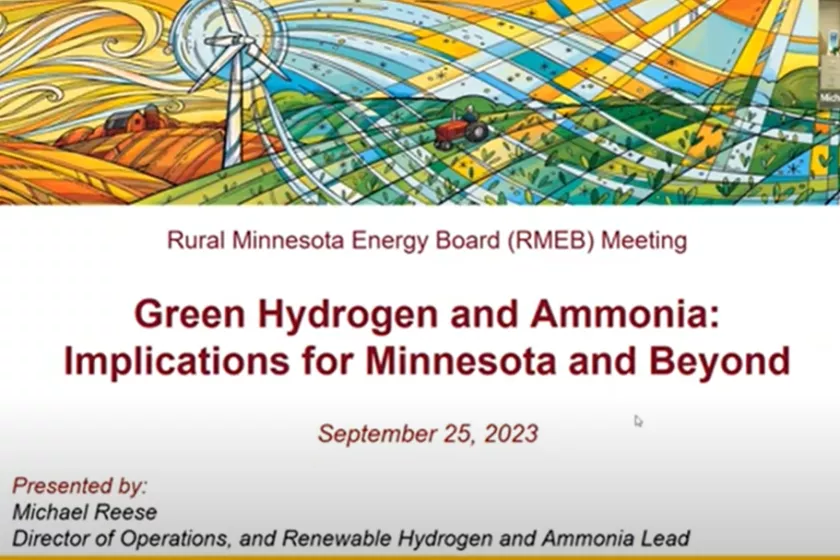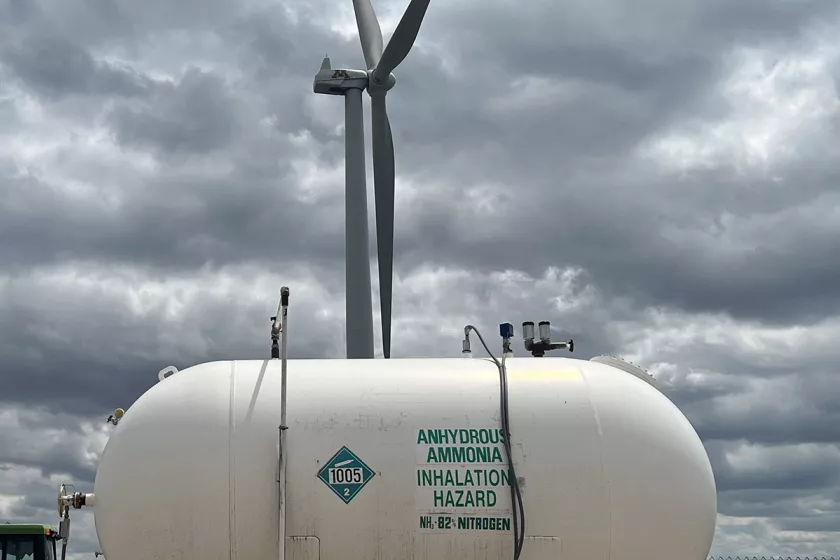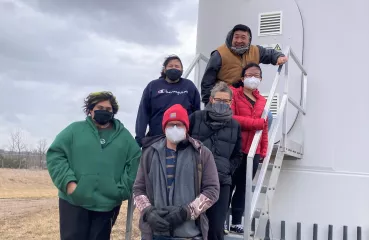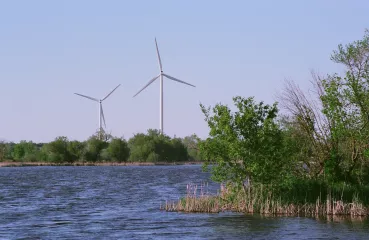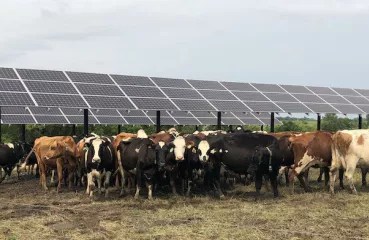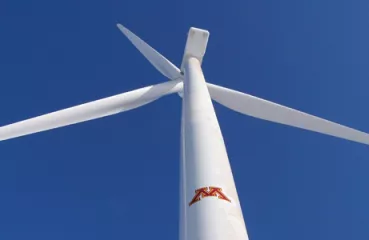The West Central Research and Outreach Center has been a forerunner in the development and use of green ammonia since they built the first-in-the-world renewable hydrogen and ammonia pilot plant. The novel pilot plant uses wind power from a 1.65 MW wind turbine to produce up to 25 tons of nitrogen fertilizer (anhydrous ammonia) each year on-site, which is enough to cover approximately 300 acres of cropland.
Reese explained that transitioning green nitrogen fertilizer is a key element to improving the carbon footprint within production agriculture. He cited that 20% to 25% of greenhouse gas emissions (GHG) in the world are attributed to agriculture. Likewise, 2% of GHG emission comes from ammonia and nitrogen.
The discussion led to talking about the need to decarbonize Midwest industries and utilities using zero-carbon hydrogen. Wind and solar can be used to produce green hydrogen which then can be converted into urea fertilizer or ammonia. Researchers at the WCROC have shown the potential for ammonia as an alternative fuel for grain dryers, tractors, and trucks. Green hydrogen can also be used as a renewable diesel, jet fuel (SAF), methanol, and ethanol. It requires capturing and recycling carbon dioxide, normally emitted via fermentation to produce the fuels. A switch to hydrogen and ammonia can fuel trucks, mining equipment, tractors, train engines, and ships. Meanwhile, displaced energy can be used in processing ore into iron pellets as well as the carbon purification process within steel making — currently responsible for 8% of global GHG emissions.
One challenge in the production of nitrogen fertilizer is that the process is water intensive, using roughly 2.3 tons of water per ton of ammonia produced. Some, however, is recovered. Currently, most ammonia is produced in the southern Gulf states. Louisiana tops the charts producing over 4 million tons.
Other barriers include: electrolyzer supply, scale, financing, developing the right partners, storage (anhydrous ammonia vs urea), experience in the field, price/risk management, and sophisticated competition.
Producing green ammonia in Minnesota makes economic sense. Farmers, in the state, spend between $500 million to $1 billion per year on nitrogen fertilizer. Reese stated that if green nitrogen was implemented, there is a chance farmers could have ownership of it through cooperatives.
Reese shared that stated U.S. nitrogen fertilizer demand could be met with approximately 50,000 MW of nameplate wind energy capacity — current U.S. wind generation is 105,583 MW of nameplate capacity.
 The University of Minnesota West Central Research and Outreach Center's (WCROC) Renewable Energy Director Mike Reese addressed the Rural MN Energy Board September 25, 2023.
The University of Minnesota West Central Research and Outreach Center's (WCROC) Renewable Energy Director Mike Reese addressed the Rural MN Energy Board September 25, 2023. 
